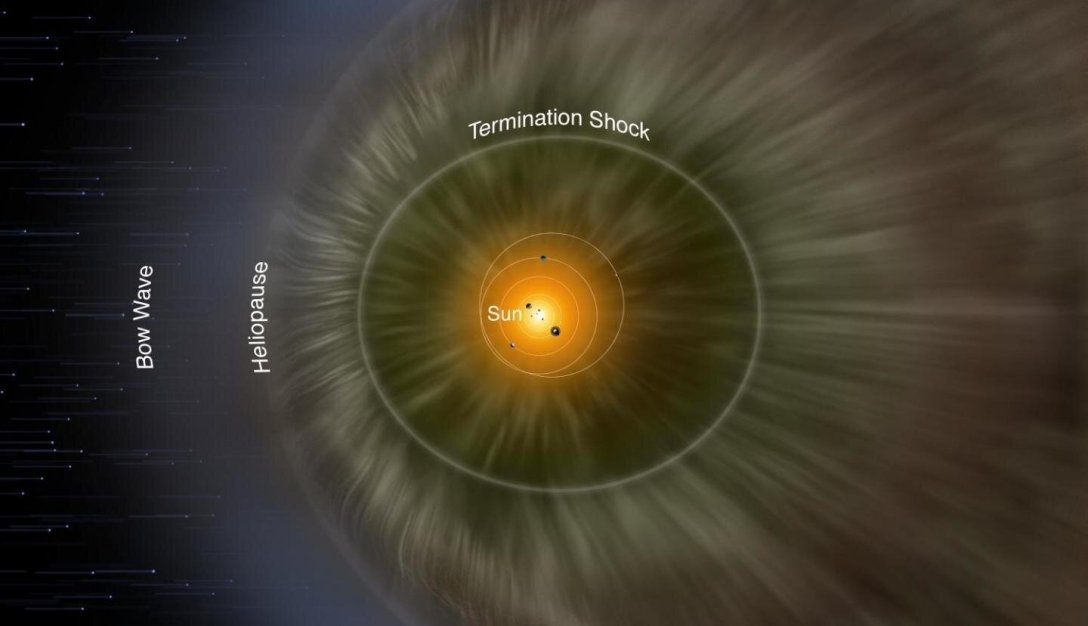Pluto is now behind us: NASA's most distant spacecraft is set to cross the boundary of the Solar System.
The NASA spacecraft "New Horizons" is the most distant probe in the Solar System. It is located approximately 60 astronomical units away from us (one astronomical unit is 150 million km). In 2015, it first observed Pluto from a close distance and began exploring the farthest corners of the Solar System, where the Kuiper Belt resides. This is a region of space filled with millions of icy bodies. Now, the NASA probe is preparing to cross the boundary of the shock wave. This boundary marks where the solar wind slows down and is essentially the edge of the Solar System, although a bit further lies the heliopause, where interstellar space begins, as reported by Space.
The area of the Sun's influence is called the heliosphere. It is filled with solar wind, which consists of streams of charged particles emitted by the Sun. However, the speed of the solar wind significantly decreases at the boundary of the shock wave, which is one of the outer limits of the heliosphere. There, the Sun's influence diminishes, and the effects of the interstellar medium begin to be felt. Yet, astronomers have very little information about this region of space, as the shock wave boundary is located approximately 11 billion km away from us.
According to the principal investigator of the "New Horizons" mission, Alan Stern, it is difficult to predict exactly when the NASA spacecraft will cross the shock wave boundary, but it is expected to happen around 2027. The most important thing, according to scientists, is that the "New Horizons" probe is functioning as it should, with all seven of its instruments operating correctly. It is anticipated that this spacecraft could continue to operate until 2050, studying the outskirts of the Solar System, and perhaps even leaving it.

Scientists state that studying one of the main boundaries between the heliosphere and interstellar space is of immense importance for astrophysics. Although the "Voyager 1" and "Voyager 2" spacecraft crossed the shock wave boundary long ago, they did not carry the necessary equipment to provide information about the pickup ions, for example. These particles can significantly dominate the transfer of solar wind energy across the shock wave boundary.
NASA scientists indicate that crossing the shock wave boundary may take only 10 minutes, but it is more likely that there will be several crossings, as the shock wave will move over several days. In any case, this will be a historic event for the "New Horizons" spacecraft. Astrophysicists will be able to understand how the shock wave boundary operates thanks to the new data.
Moreover, scientists believe that in a few years, the "New Horizons" probe may find itself at the center of a new region of the Kuiper Belt, which could prove that this area of space is much larger than currently thought.